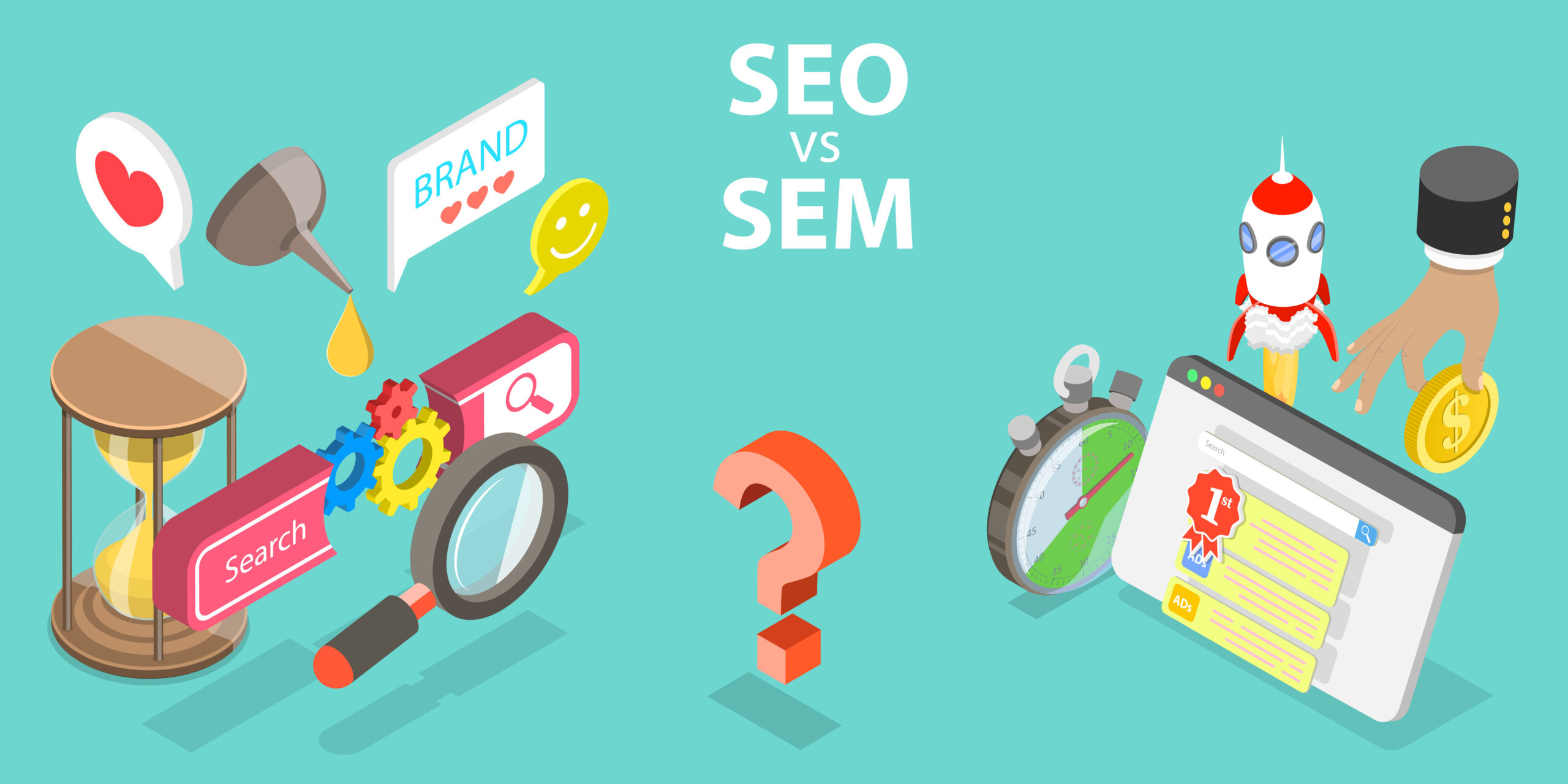SEO VS. SEM: Key Differences
January 17, 2024
SEO and SEM are critical factors to successful marketing strategies. To understand the importance of implementing SEO marketing and SEM, and when is the correct time to use either one of them, you first need to know what these acronyms mean.
SEO, or search engine optimization, is the practice of creating strategic, organized content to persuade search engines, such as Google, Yahoo, and Bing, to recommend your content to consumers with search queries that best relate to their search. On the other hand, SEM, or search engine marketing, implements paid advertisements to gain visibility on search engine result pages (SERP); SEM is also referred to as PPC, pay-per-click.
Key Components of SEO
More often than not, finding the answer to a question begins with search engines. In fact, search engines are used so often, organic search delivers 53% of all website traffic. Despite this, SERPs are extremely competitive to land on; creating a strategy for ranking on them is important.
SEO makes your website more visible; this means more website traffic and ultimately more sales. SEO is a valuable tool to increase your brand awareness. Implementing seo can result in increased position rankings and build trust with consumers as they see your brand appear at the top of the search results under specific keywords.
Another reason SEO is an essential tool for brands is because the work is sustainable, meaning the work stays relevant outside of a campaign. When a paid advertising campaign ends, so does the traffic.
After you understand what your audience is looking for, implement that into your SEO strategy across campaigns, keywords, website content, and social media channels. Although, organically placing on SERPs can be tricky, because you cannot always predict what the consumer will search for. This takes us into our next topic: SEM.
Key Components of SEM
When examining SEO and SEM together, it’s noted that SEM is not always a major component of a successful SEO strategy, but it does help brands reach new and targeted audiences. SEO and SEM are related, but SEM involves paid advertising to reach the brands goals. Examples of when SEM is used includes: Search Ads, Display Ads, Social Media Ads, Shopping Ads, and Gmail Ads.
SEM has a few noteworthy benefits. The first is that results are almost instantaneous. SEO can take months to see real results, while SEM starts generating results upon the launch of the campaign. With SEM the user is in complete control of when the ads show, the audience they are directed to, deciding which channels to include, sending traffic to a sale, or accelerating traffic during low interaction times.
SEO and SEM should not be seen as separate tools, but should be used together as two parts of a digital strategy that will increase visibility and website traffic, and create conversations from search engines.
Utilize Raze Media’s Extensive SEO and SEM Services!
All businesses want to occupy the number 1 position on search engine result pages, but how do you get there? Visit our website to learn more about how our extensive SEO and SEM services can boost your business’s search presence.



